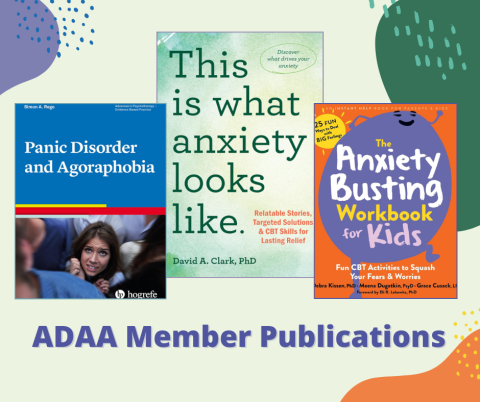You CAN Overcome a Fear of Needles
You CAN Overcome a Fear of Needles

You – or someone you know – may fear needles, injections, blood draws, or IVs. Fear of needles is very common. Most children, as many as 50% of teenagers, and 20-30% or more of adults have some fear of needles.
Fear of needles can limit your life and harm your health. It can keep you from getting necessary medical and dental care or becoming pregnant through in vitro fertilization (IVF). With COVID-19, many people want to overcome their fear of needles to get vaccinated.
These 6 steps can help.
Step 1: Identify the Fears
Ask yourself what exactly you fear. For example, do you fear that:
• The pain will be intense or unendurable?
• You will faint?
• The needle will cause damage (i.e., get stuck, hit a bone, break off, bleed too much)?
• The healthcare worker will be incompetent and need to stick you repeatedly?
Step 2: Get the Facts
After putting your fears into words, see if the facts actually support your fears. Make a table with 2 column and several rows:
• In the left column, write your fears, one per row.
• In the right column, write specific facts, science, and logic that either support or disprove the fear.
Correct misinformation about the procedure or the body. Answer questions like:
• Is what the fear says true?
• Does what the fear predict actually happen? And if it does, how long does it last?
• How bad is it really in the larger scheme of things? Is it truly “the worst” that could happen?
• Are healthcare professionals really sadists who enjoy torturing patients?
• How can you cope with fear without giving in to it?
Step 3: Plan for Actual Issues
You may get anxious. Injections can sometimes be painful. Some people don’t just feel faint; they actually faint. Problem-solve any real issues.
• If you fear being anxious, get the facts about anxiety and panic, learn coping techniques like belly breathing with a slow exhale. Understand that you have to show your brain you will no longer be bullied by fear.
• If you fear pain, ask your healthcare provider for a numbing cream to use in advance.
• If you pass out, see a therapist or healthcare professional who can teach you applied tension. This is a technique that will stop you from fainting and should only take one or two sessions to learn.
Step 4: Prepare
Change what you tell yourself. Write down the reassuring facts, review them, and practice them so can you remember even when you’re scared. Accept that anxiety feels uncomfortable but is not dangerous.
Write about and imagine successfully getting the injection despite anxiety. Visualize being compassionate, realistic, and firm with your fear. If you are seeing a therapist who offers virtual reality therapy (VRT), practice getting virtual blood draws or injections.
Think about all the reasons you have to overcome your fear. Consider the benefits and the relief that getting over fear of needles will bring. Remember why it is worth the work.
Step 5: Act on the Facts, not the fear
As I explain in Overcoming Anxiety and Panic interactive guide, you will stay scared if you:
• Avoid or run from what scares you.
• Fight your anxiety response because you fear it.
• Do things to feel “safe” from a fear that the facts don’t support.
• Do what scares you but stay on high alert and “white-knuckle” through, hating it the whole time.
Your job is to act on what the facts say – not what your fears say – even if you are scared. This strengthens you, weakens fear, and will improve your life and your health.
Step 6: Praise and Reward Yourself
Reward yourself with something nice. You showed courage and perseverance. Be proud of yourself and your progress. Focus on the positives.
Getting Help for Needle Fears
The steps above can be easier to accomplish with support and guidance from a therapist who specializes in cognitive-behavioral therapy (CBT) for phobias. Some therapists even offer virtual reality exposure therapy (VRET) so you can practice getting virtual blood draws or injections until you become more comfortable.
The good news is needle phobia can respond quickly to treatment. No matter how long you have been fearful, there is hope.
References
• McLenon, J., & Rogers, M. (2019). The fear of needles: A systematic review and meta-analysis. Journal of advanced nursing, 75(1), 30–42.
• McMahon. (2019). Overcoming Anxiety and Panic interactive guide. Hands-on-Guide. See: www.overcoming.guide
















